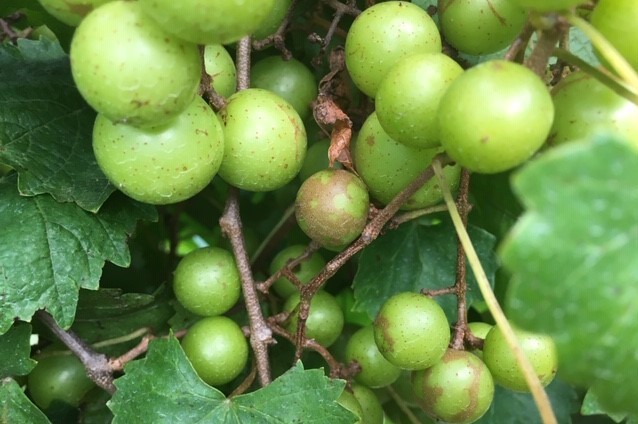Clemson Extension agents provided updates in The South Carolina Grower this week about the status of various crops being produced throughout the state.
Statewide
Dr. Matt Cutulle reports, “Hurricanes or tropical storms can lead to increased seed dispersal from seeds that can be transported by wind and water. Two notorious weeds that come to mind when planning for hurricanes are Horseweed (Conyza canadenis), which due to lightweight seeds and plant architecture, can be dispersed for miles during wind storms. A troublesome weed that can be dispersed through water (overflowing irrigation ditches, river surges etc.) is curly dock (Rumex crispus) due to the bladder-like structure of the seed. If you have access to a flame weeder or maybe Gramoxone it might be a good idea to get out to any fallow fields right now and start torching weeds with seed heads prior to this incoming storm to prevent unwanted widespread dispersal of weed seed.
Coastal
Zack Snipes reports, “We are anxiously awaiting to see what Hurricane Isaias will do today and tonight. Hopefully, we will be spared of heavy rains and winds. Some rain from the storm would not be a bad thing as many fields are dry. I have been finding some leaf spots in rabbiteye blueberry, which is common for this time of year. What is unique about the leaf spots is that they have caused the variety Tifblue to shed its leaves and then attempt to grow out more leaves. The plant is weak and nutrient-starved so the new leaves are very small and red. You will see red shoot flagging symptoms on Tifblue but no other varieties. The other varieties will have the same leaf spot but they will still hold onto their leaves. Increased fungicide applications between bloom and harvest should help with management of this disease and increase yields on Tifblue and other cultivars.”
Midlands
Justin Ballew reports, “Some of the midlands got some heavy rain this past week, while others remain dry as a bone. Parts of Lexington had a strong storm come through Wednesday night that washed out areas in some fields and left ponds in others. We will have to replant some areas where fall crops had just been planted. The weather has cooled of slightly since. Aside from that, folks are still prepping fields and planting fall tomatoes, peppers, and brassicas. We’re still thinning pecans also. For anyone planting strawberries this fall, now is a good time to start taking soil samples.”
Pee Dee

Bruce McLean reports, “Most vegetable and fruit crops look surprisingly good for the amount of heat we have had recently. Sweet potatoes are growing very well. Peas, squash, zucchini, cantaloupe, watermelons, okra, and cucumbers are all looking good and harvesting good quantities. Downy mildew is still showing up on cucumbers, and powdery mildew on squash and zucchini. Sweet corn and butterbeans are wrapping up. The blueberry crop is finished. Muscadine grapes are looking very good. Wine/juice muscadines are just starting to color (maybe around 2-3%) and should be ready to begin harvest in about three weeks. Fresh market varieties should be just getting ready to harvest now on the earliest varieties. Grape root borer (GRB) activity was high this past week, with some traps capturing 50+ moths. Too late for any type of treatment for GRB. Just monitor and plan for control next year. Powdery mildew damage is starting to show up in the vineyard. No signs of fruit rot yet. Stink bug damage has been very light in vineyards with a strong spray program.”
Tony Melton reports, “All processing peas are harvested for the spring crop, but we have some cowpea curculio because of uneven crop due to excessive rain. Fall cowpea crop is planted or is rapidly being planted. If they found seed, farmers have already planted fall butterbean crop. Getting ready to plant fall brassica crops. Hopefully, all vegetable growers sprayed potassium phosphide on all vegetable crops before all the rain comes for root rot control.”
Upstate
Kerrie Roach reports, “Rain has still been spotty around the Upstate, so irrigation has been extremely important for vegetable production. Storm tracks are showing that the Isaias will bring some relief for the entire area. Early apple varieties are beginning to ripen, but sugar levels are still a little low. Blueberries are about finished for the season, and peaches are hitting mid-stride. Cover sprays on tree fruits will be necessary as soon as the rain event passes. Insect pressure is increasing on vegetable crops as we move later into the season and into early parts of fall cropping, so scouting is extremely important.









